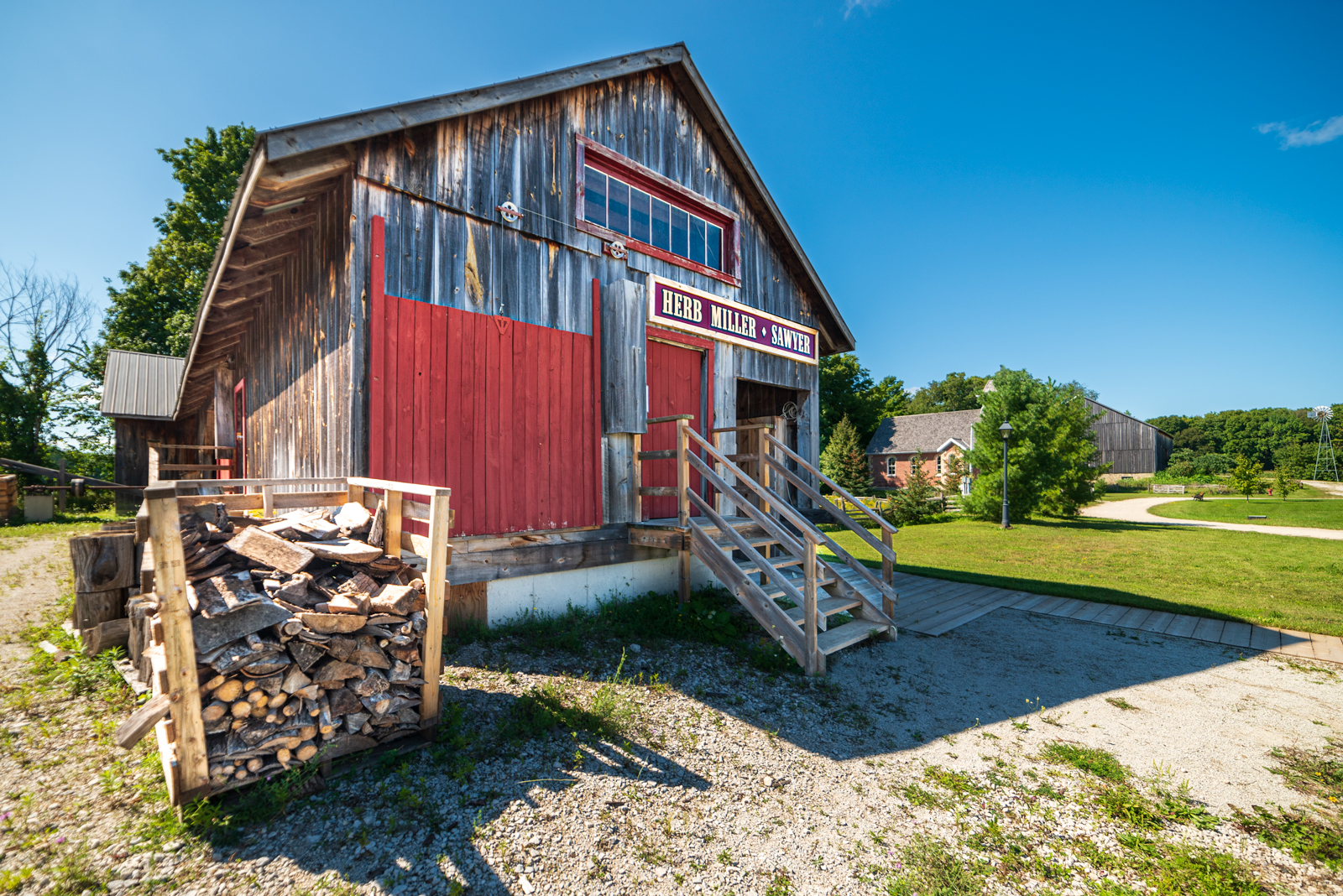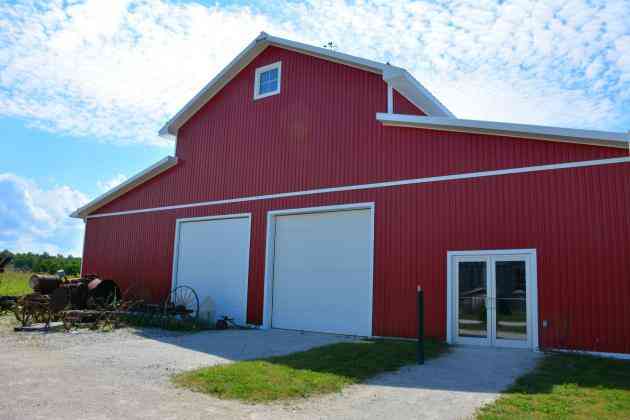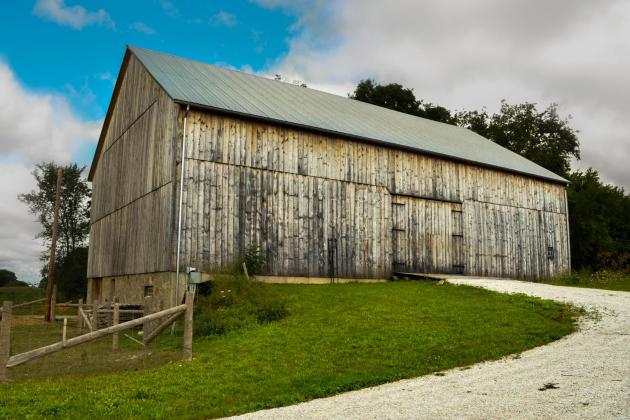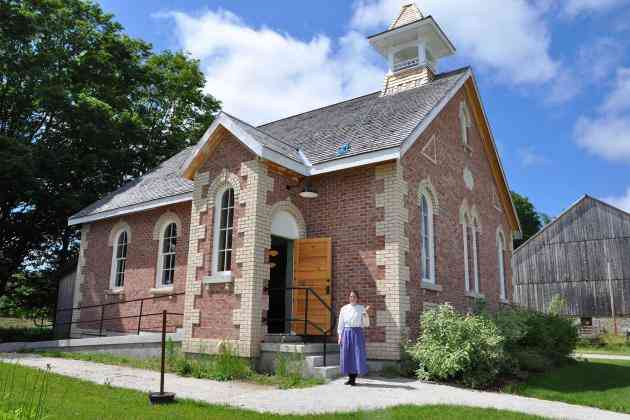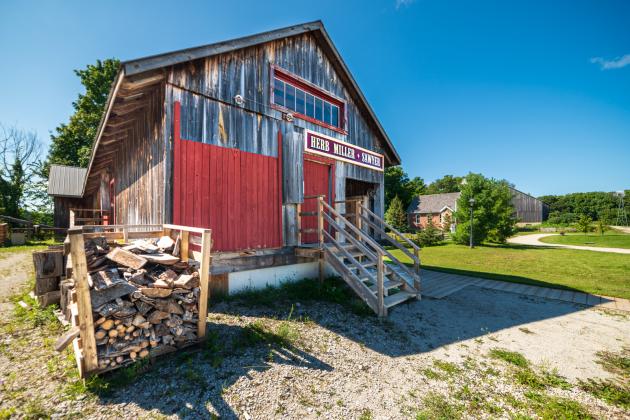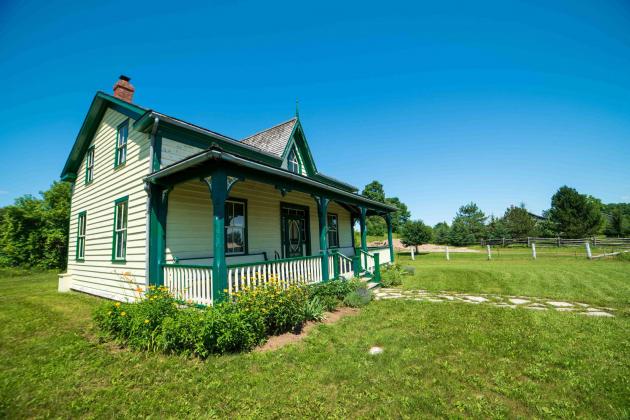1920s Herb Miller Sawmill
In 1980, Herb Miller, owner of Grey County’s Welbeck Sawmill, and a woodworking history enthusiast, funded the museum’s purchase of a circular sawmill carriage that had been manufactured in Owen Sound by Wm. Kennedy & Sons. After museum staff restored it, the carriage needed a demonstration area, so Landmark Builders and museum staff began work on a sawmill which would be named after Mr. Miller in gratitude.
The sawmill opened to the public in 1998. It was used for sawmilling demonstrations, with either a steam traction engine or a tractor providing power for the pulley running the saw. The building was moved to Moreston Heritage Village in June 2006 and a pond was dug nearby to be used as a “hot pond”, a feature which allowed old sawmills to thaw frozen logs for milling in the winter.
Historically, mills were dangerous places to work, and fire was always a threat. In photographs of Grey County sawmills, water barrels and ladders are mounted on rooves, as a basic form of fire protection. Our museum's sawmill houses a 48-inch circular saw inside what was intended to be a portable saw carriage, designed to be set up in the bush and powered by steam traction engine. A large sawmilling operation would consider this a "light-duty" sawmill. Sawmills were busy places, often with tramways and huge piles of lumber, logs and slab wood. Horse teams would come and go with logs and lumber in the winter. Circular saws were once used exclusively, but were eventually replaced by gang saws, which operated vertically, and then by band saws by the 1920s.
By the turn of the twentieth century, six sawmills existed along the waterfront of Owen Sound Bay. Each mill had its own source of timber, and logs were towed to Owen Sound's harbour in giant log booms in the spring after the winter's logging. Grey County men also brought in horse-drawn sled loads of huge logs, and such teams were a familiar sight in downtown Owen Sound in the winter. In 1910, Owen Sound sawmills produced more than 38 million board feet of lumber.

